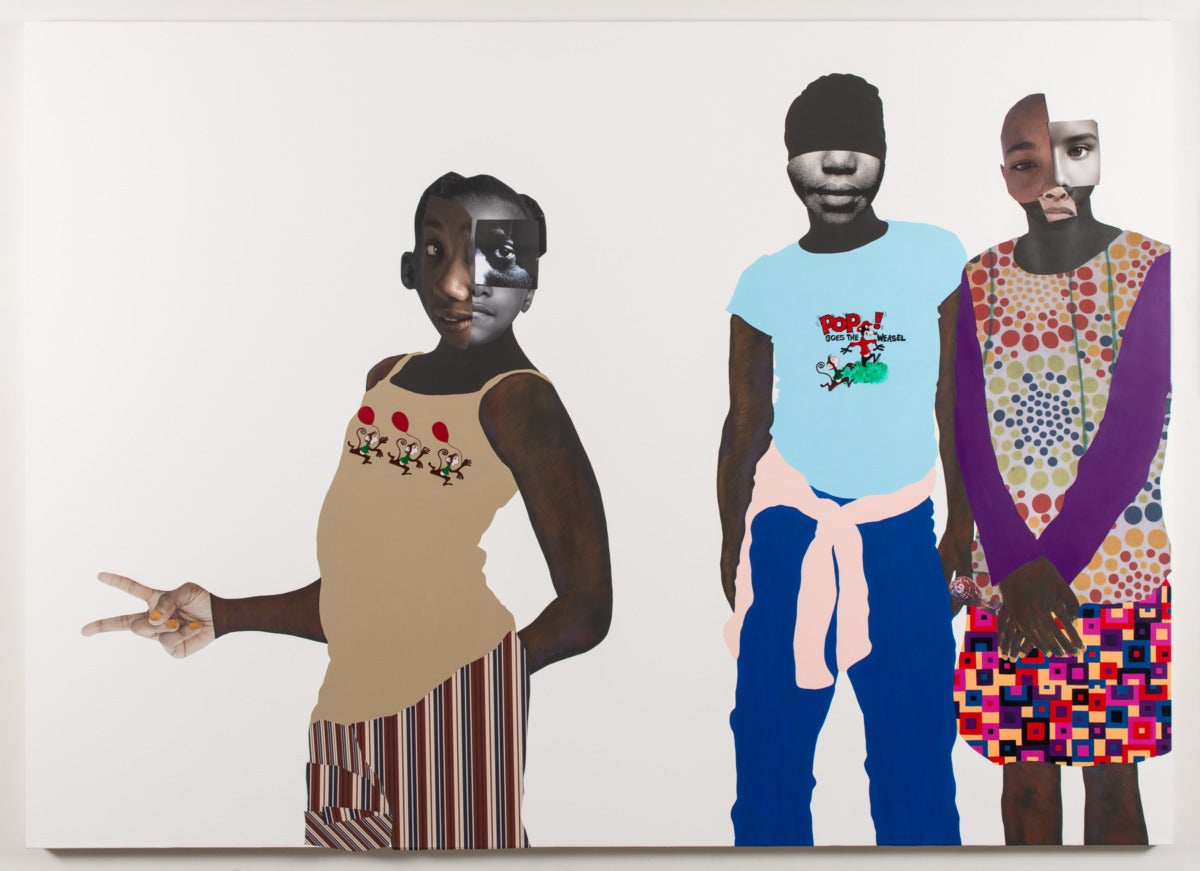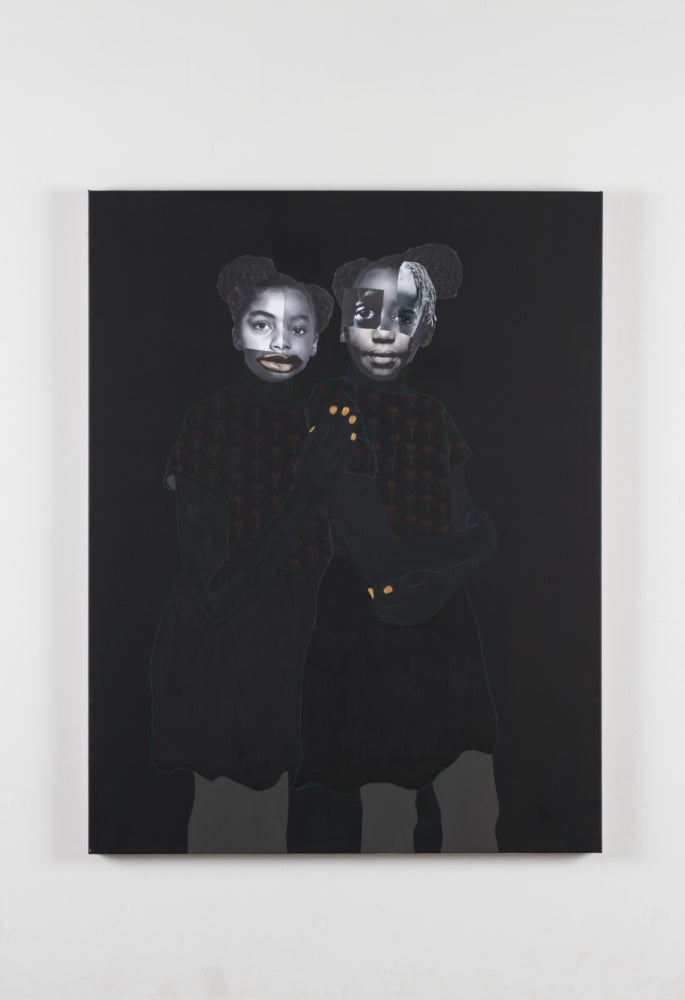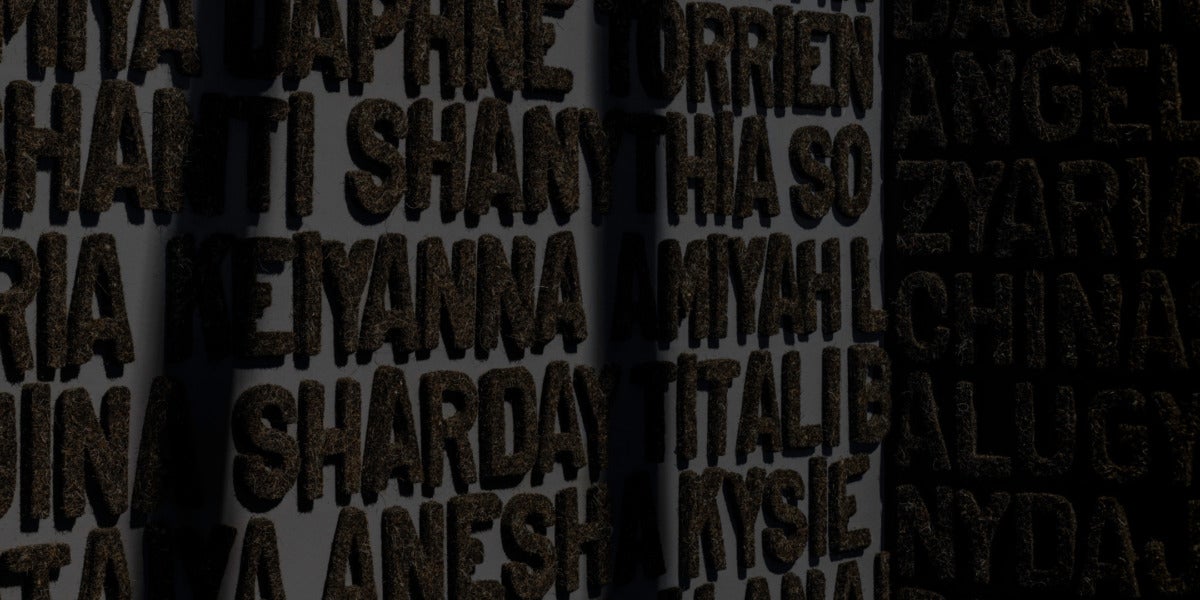
Deborah Roberts: I’m makes its last stop at the Cummer Museum of Art & Gardens in Jacksonville, Florida this fall—the only stop along the East Coast. The solo exhibition, which features text-based print serigraphs, her signature collage and mixed media figurative works, and a new video and sound installation titled What if? is a paramount exploration of race, childhood, empathy, and the power of visual culture in locating and relocating multiple and simultaneous histories, subject formation, and visibility.
The Pluralism series, serigraphs on paper which list African American female names rendered by Microsoft Word as “incorrect” with a red squiggly line depicted underneath each moniker, highlights how shared tools for word processing and meaning can frame subjecthood as invisible, non-normative, and “unsuitable.” The exhibit begins from this place, asking how can one, particularly the Black American woman, see herself within such systems? Roberts’ answer is both illustrative and complex. While the exhibit includes works such as The looking glass (2019) and Good Trouble (2020) which feature boy-figures, Roberts’ striking, breathtaking, and brilliant investigation into girlhood and its concurrent sutures of past, present, and future illuminate seeing—oneself, histor/ies, and empathy.

Portraits: When they look back (No. 3) (2020), a mixed media collage presenting girl-figures situated on black backgrounds, gazing out toward the viewer are an arresting example of how Roberts recuperates Black girlhood from the whiteness of the page into a world which centers Black female identity. The collaged faces yield distinct and captivating facial expressions and position the figure as an interstice of time: Roberts’ girls are both a physical result of the past—as collage depends on images already made; therefore, a moment already transpired—and a precipice for the future. The girls, in their layered expressions, tiny gold nails, and melding bodies into the ground, become synapses between the past, present, and future.
The duty of disobedience (2020) further demonstrates a simultaneity of time codes through the medium of collage. Situated against a white background, two of the three girls wear cartoon imagery on their clothing that alludes to anti-Black stereotypes, as they face the viewer. The far left figure’s collaged face includes two noses and two mouths, an expression in motion and shifting through time. The combination of “moving” collage, along with the visual references on their clothing, solidifies continuity of collective and personal pasts. The union of movement and references informs how one is perceived, but may not define individuated subjecthood: existing simultaneously within and beyond systems. This literally layered depiction invites the viewer to consider history, pop culture, the referential, along with how and when the body can be freed from these structures; how youth conceivably physicalize this collision while offering a potentiality not yet imagined. Interestingly, Roberts’ children will always be that: children—at the intersection of race, gender, past, and future—today, tomorrow, and in perpetuity.

What if? (2021) bookends the exhibit. As a confessional-style video and sound booth installation which surrounds the viewer within the names, feet, and sounds of Black girlhood, Roberts generates a contemplative space addressing the critical concern of missing Black girls. As the viewer pulls a curtain across the booth to enter the installation and is situated into an invisible space, a repeatedly neglected and overlooked in the mass media issue is elevated. What if? harmonizes with the Pluralism series as an experiential piece contending with the intersections of race and gender. The viewer is encouraged to enter through either side of the booth. The left side plays an audio piece as the viewer sees themselves reflected in a mirror with names in felt along the sides of the interior booth walls and above them bars creating a semi-open roof and simultaneous prison. The right side loops a video sequencing edited footage: an African mask cut out, bits of colorful paper, and pictorial examples of the classist racist struggle faced by Black women.
As a White viewer, What if? locates my shared and individual culpability while summoning empathy—a compositional experience echoing her figurative works. In exiting the booth and examining the text serigraphs and figurative collages again, Deborah Roberts initiates an astounding world of contemplative convergences between the collective systems which drive misidentification and the visual-experiential spaces which foster singular and collective compassion.
Deborah Roberts: I’m, will be on view at the Cummer Museum of Art & Gardens in Jacksonville, Florida through December 4, 2022.
Become a member or make a tax-deductible donation below.




